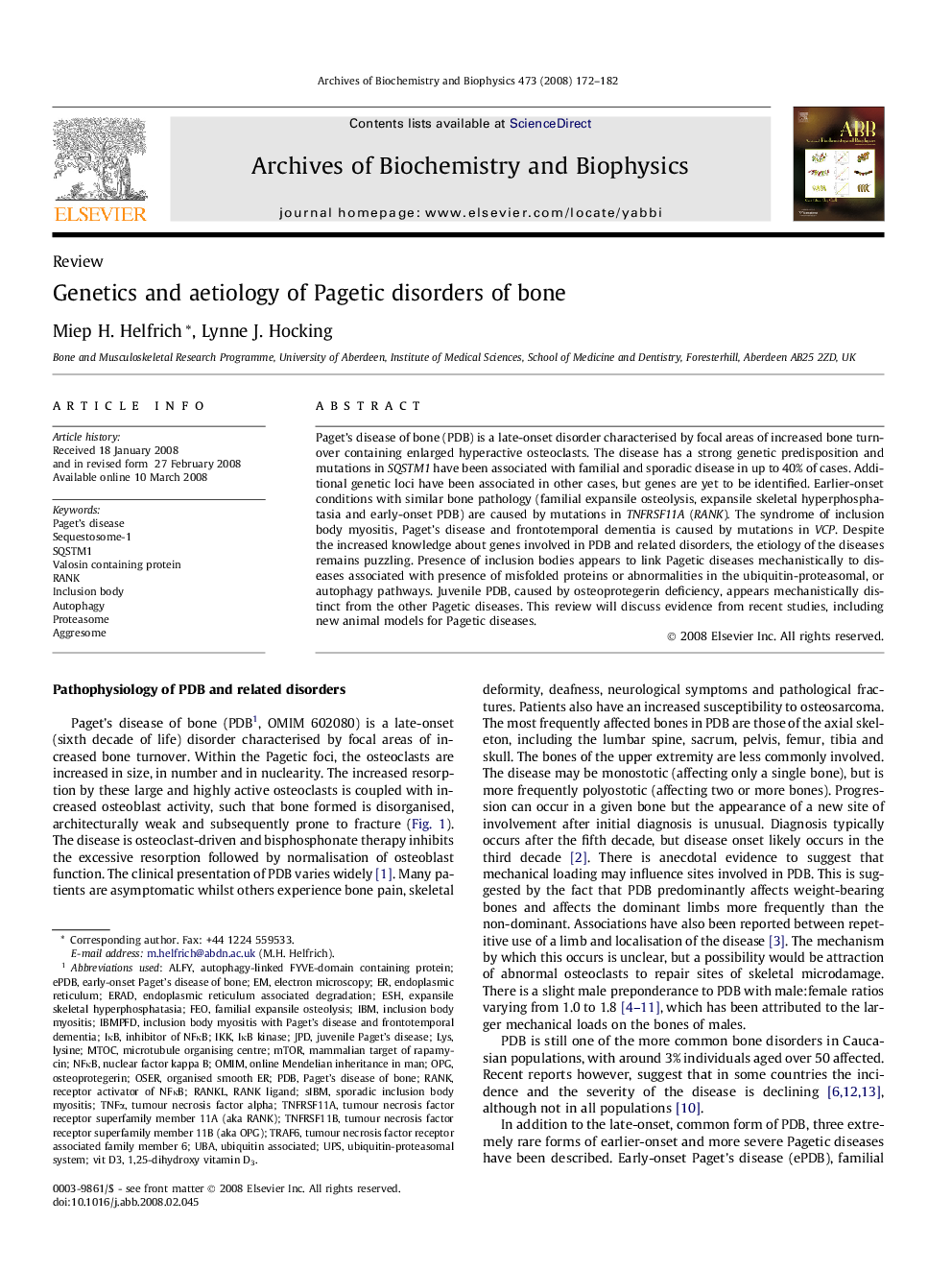| Article ID | Journal | Published Year | Pages | File Type |
|---|---|---|---|---|
| 1926817 | Archives of Biochemistry and Biophysics | 2008 | 11 Pages |
Paget’s disease of bone (PDB) is a late-onset disorder characterised by focal areas of increased bone turnover containing enlarged hyperactive osteoclasts. The disease has a strong genetic predisposition and mutations in SQSTM1 have been associated with familial and sporadic disease in up to 40% of cases. Additional genetic loci have been associated in other cases, but genes are yet to be identified. Earlier-onset conditions with similar bone pathology (familial expansile osteolysis, expansile skeletal hyperphosphatasia and early-onset PDB) are caused by mutations in TNFRSF11A (RANK). The syndrome of inclusion body myositis, Paget’s disease and frontotemporal dementia is caused by mutations in VCP. Despite the increased knowledge about genes involved in PDB and related disorders, the etiology of the diseases remains puzzling. Presence of inclusion bodies appears to link Pagetic diseases mechanistically to diseases associated with presence of misfolded proteins or abnormalities in the ubiquitin-proteasomal, or autophagy pathways. Juvenile PDB, caused by osteoprotegerin deficiency, appears mechanistically distinct from the other Pagetic diseases. This review will discuss evidence from recent studies, including new animal models for Pagetic diseases.
